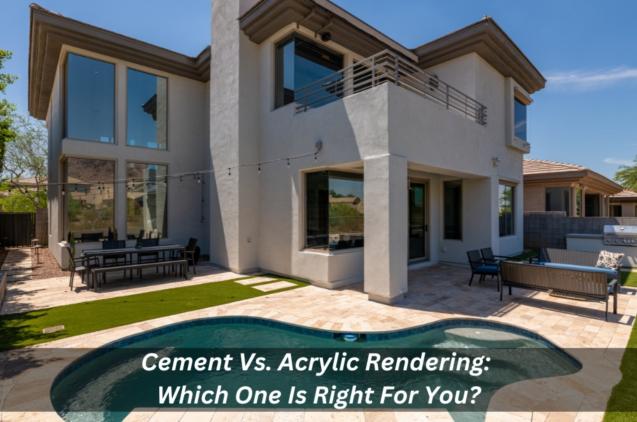House
rendering is the application of a solid material like plasterboard on internal or external walls, ceilings, and floors in order to make them weatherproof and fire-resistant. It’s usually applied after all wall surfaces have been painted or primed (or both). After it dries, it becomes hard and permanent while leaving behind an attractive finish or colour scheme that can be customized by painting or staining.
This type of work is typically done by residential contractors and doesn’t require any specialized skills other than being able to follow detailed instructions and use basic tools such as paint brushes and roller applicators.
Rendering services are categorized into two types: interior house rendering and exterior house rendering. Interior rendering involves applying a coating over the inside surface of walls, ceilings, and trim; exterior rendering consists of covering outside feature walls and roofs with plasterboard.
Both types of rendering are used for different reasons. For example, you might choose to apply a coat of exterior render to your house because you want to disguise unsightly mortar joints between bricks or stones.
Different types of RenderingThere are many ways to perform house
rendering services. Some homeowners prefer using their own materials and supplies while others hire professional builders or licensed tradespersons who specialize in this line of work.
This technique uses an exterior plasterboard called drywall. Drywall is composed of gypsum board and has a smooth texture when finished. When applied over masonry, tile, brick, stone, concrete, or cement block, the result is a durable exterior veneer that looks great.
Interior render is commonly used to cover the inside of window frames, doorways, walls, baseboards, and crown moulding. It also protects wood flooring from water damage and helps prevent mildew growth.
Cement rendered or concrete rendering refers to the application of drywall over a wall surface that has been previously painted or plastered. Drywall can be applied using either a spray adhesive or an aerosol foam (often referred to as “foamboard”).
Acrylic rendering involves the use of acrylic paint that has been specially formulated to be used for exterior surfaces. This paint can then be applied over existing materials such as brick, stucco, wood and concrete.
Stucco is a porous pre-mixed mixture of Portland cement, sand, water, and lime. It comes in powder or liquid form and is frequently mixed with fibreglass mesh to create a textured appearance.
Polymer modification refers to the modification of polymers (e.g., plastics) using chemical processes that involve the use of chemicals.
- Cementitious Tile Coating
Cementitious tile coating is a thin layer of cement paste applied directly to ceramic tiles to provide protection against moisture absorption and fading.
Wood plasters are made up of a special blend of glue and either sawdust or bark chips. They come in sheets that are cut corners to size and then attached to walls with nails or screws.
Fibreglass sheet is a lightweight material that can be applied to almost any structure to give it a sheen similar to stucco.
- Fibreglass Spray Foam Insulation
Fibreglass spray foam insulation creates a barrier between the inside and outside environment. While fibreglass insulates heat transfer, it does not protect against moisture penetration.
In addition to these choices, you can opt for one of the following methods to apply the finish:
This method requires only simple hand tools. Workers simply hang drywall panels by nailing them together using wooden battens. Once they're secure, workers tape off each panel's edges before applying a topcoat.
Using rollers, workers lay down several coats of plasterboard until the desired thickness is achieved. Depending on how thick you want your coloured render, you may need to use more than one roller.
Workers place a cloth or rag against an interior or exterior wall and rub it across the surface to remove excess render. If you decide to go this route, make sure the area being rendered has been thoroughly cleaned first.
The cost of rendering your home depends on the type of materials required, the square metre as well as the amount of labour involved. In general, the higher quality of the materials, the cheaper the price per square foot; however, the lower quality renders tend to have a high labour component, which means they are often priced similarly to a good-quality job.
There are many variables that affect the final cost of your project. You should know what type of work you need to be done on your property so you can select the best contractor for your needs. Once you've selected who will do the work, you can start thinking about how much the job will cost.
You should always check with your local building department to ensure your building permit allows for interior renders. Some regions require permits for exterior renders.
DIY rendering projects are also possible but are usually more expensive because they involve a lot more work. Your best bet would be to consult a professional contractor if you feel confident enough to tackle the task yourself. Rendering your home can attract potential buyers if you’re planning to sell your house.
After the application process is complete, you'll have new-looking siding on your storey home that will last for a long time! If you'd like to learn more about rendering services, you can search for "house rendering" or "render house" on the internet to help you get started.




